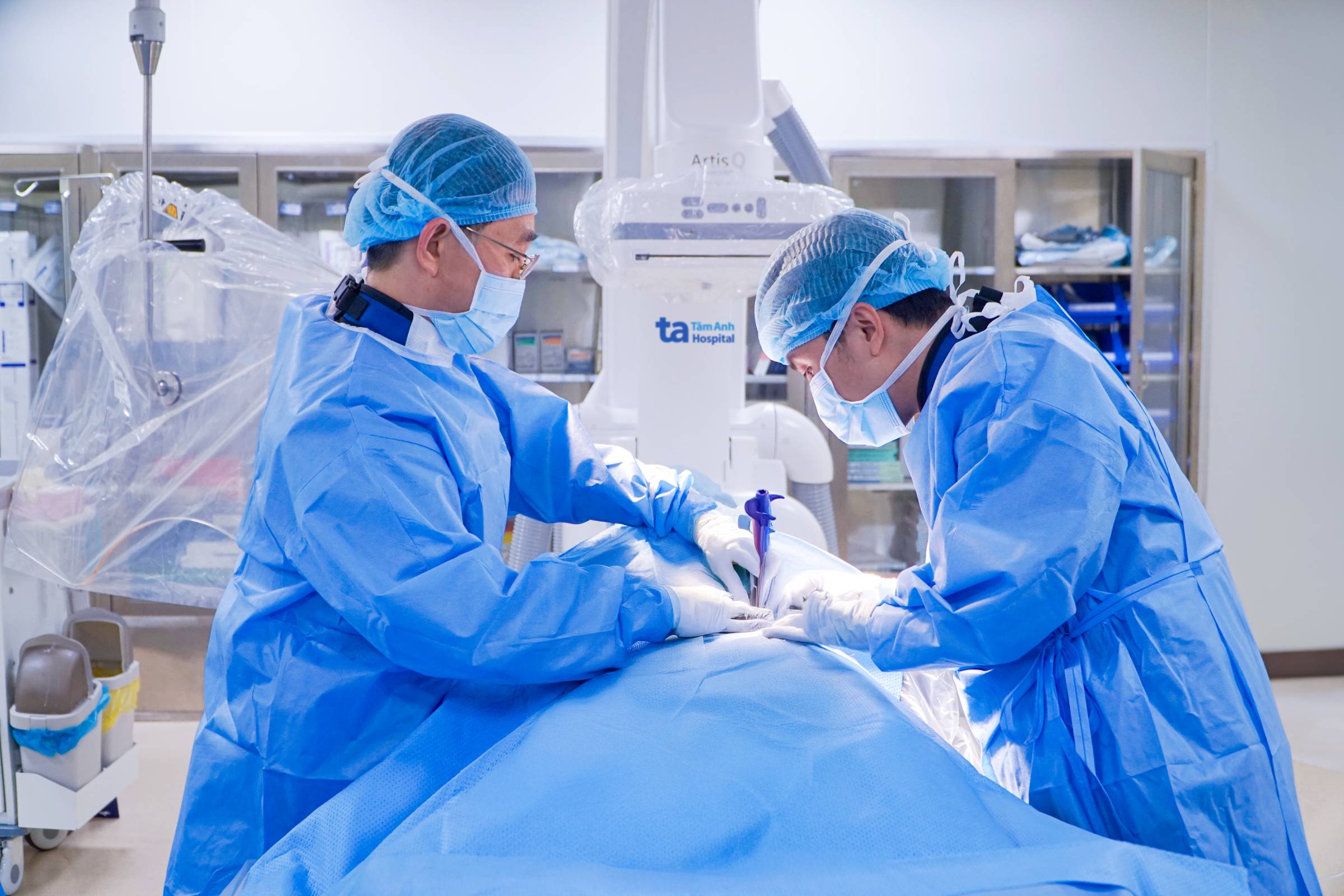Thomas's abdominal aortic aneurysm was discovered three years ago, measuring about 40 mm. At the time, it was small and asymptomatic, so doctors recommended monitoring. Recently, he experienced abdominal discomfort and visited Tam Anh General Hospital in Ho Chi Minh City for a check-up before returning to Italy. Doctor Nguyen Anh Dung, Head of the Thoracic - Vascular Surgery Department, said that Thomas's CT scan revealed a fusiform abdominal aortic aneurysm below the kidney, 83 mm long, extending to the aortic bifurcation. Notably, the aneurysm had grown rapidly, from 48 mm to 54 mm in three months.
An abdominal aortic aneurysm occurs when the aortic wall weakens and expands, forming a blood-filled sac that is 1.5 times larger than normal. There are two types of aneurysms: fusiform and saccular. The weakened section of the aorta is prone to rupture under blood pressure if not treated promptly.
Doctor Dung explained that the most common cause of aortic aneurysms is atherosclerosis. Thomas had previously suffered a heart attack caused by plaque blocking a coronary artery, restricting blood flow to the heart. Over the years, the atherosclerotic process continued, weakening the arterial walls and leading to the aorto-iliac aneurysm.
According to European and American vascular societies, intervention or surgery is recommended for aneurysms 55 mm or larger, those growing more than 6 mm per year, or those causing abdominal discomfort during monitoring. Thomas received an aorto-iliac stent graft. Doctor Dung stated that compared to traditional open surgery, stent grafting offers advantages such as faster recovery, shorter hospital stays, and reduced complications.
 |
A doctor places a stent graft into the patient's aneurysm. Photo: Ha Vu |
A doctor places a stent graft into the patient's aneurysm. Photo: Ha Vu
After the procedure, Thomas was alert and his abdominal discomfort subsided immediately. A CT scan confirmed stable blood flow through the stent graft with no leaks, and he was discharged after two days.
Most abdominal aortic aneurysms are asymptomatic in the early stages, making detection challenging. Some aneurysms never rupture and remain small. If an abdominal aortic aneurysm is growing, the patient may experience mild deep abdominal or back pain, or a pulsating sensation near the navel (similar to a heartbeat).
A ruptured aortic aneurysm drastically reduces the patient's chances of survival with each passing hour. If symptoms of a rupture occur, such as pale skin, cold limbs, sweating, dizziness, fainting, rapid heartbeat, nausea and vomiting, shortness of breath, or sudden and increasing pain in the abdomen, lower back, or legs, immediate hospitalization is crucial.
Besides atherosclerosis, risk factors for aortic aneurysms include high blood pressure, high cholesterol, and smoking. Prevention involves avoiding tobacco, adopting a healthy diet (reducing salt, limiting foods high in bad cholesterol, increasing intake of chicken, fish, fruits, vegetables, and whole grains, and avoiding sugary drinks and sodas), avoiding strenuous activity, managing stress, controlling blood pressure, and effectively managing underlying health conditions.
Thu Ha
* The patient's name has been changed
| Readers can submit questions about cardiovascular diseases here for doctor's answers |












